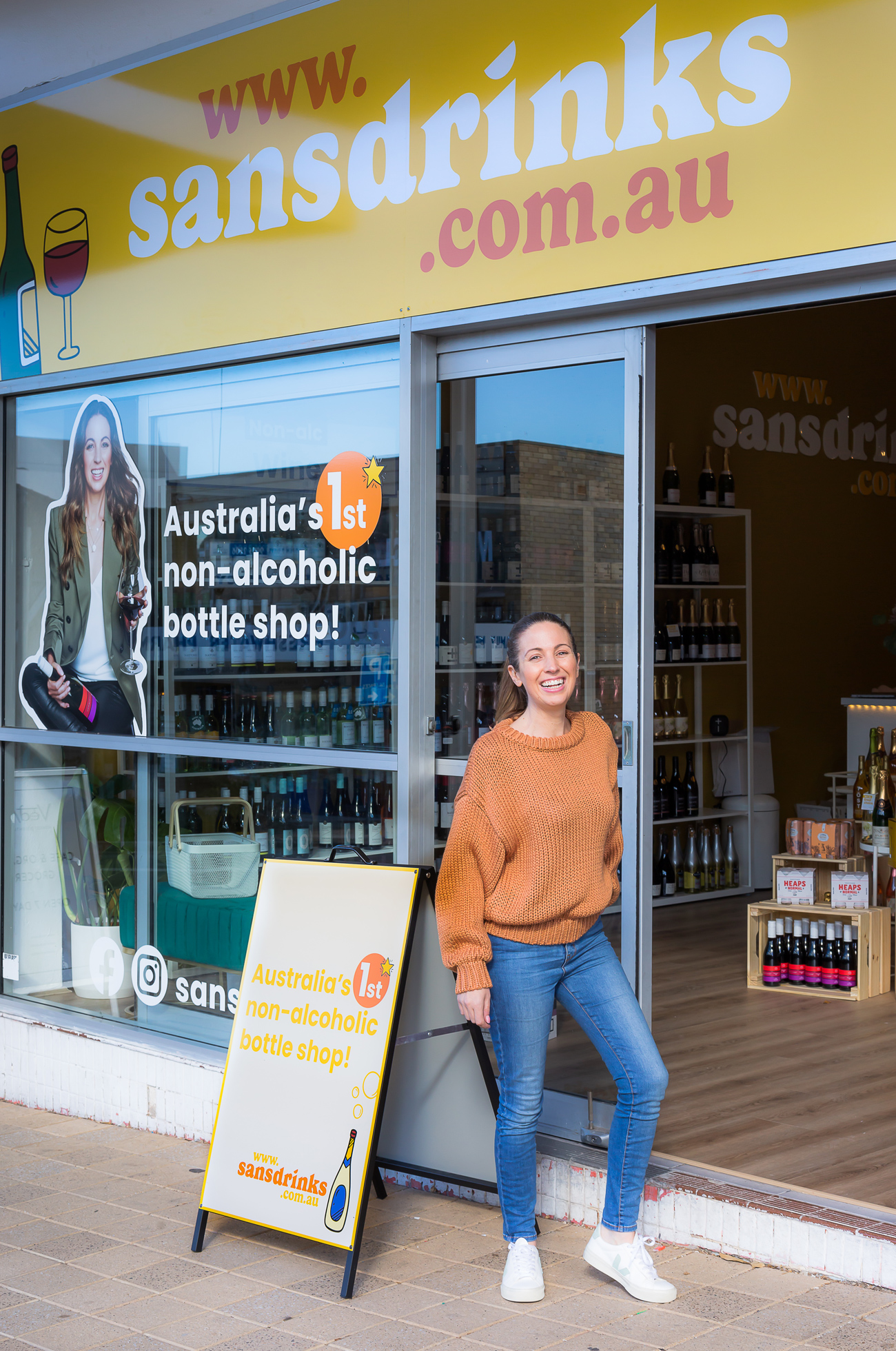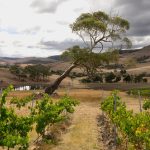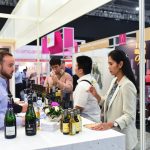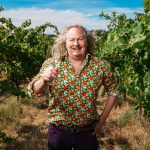Much has been published by local and international media outlets in recent months about no and low (NOLO) alcohol wine. While several studies have reported and forecast sales growth in this space, an increasing number of products have hit the market and there are now even retail stores specialising in de-alcoholised wines. Having delved into New Zealand’s efforts to develop good quality no and low alcohol wines in the July issue of the Grapegrower & Winemaker, and the methods of producing such products in a follow-up article in the August issue, Sonya Logan now turns her attentions to examine the growing consumer interest in NOLO wines in Australia and New Zealand, particularly those containing less than 0.5% alcohol by volume.
Irene Falcone had no need to auction off her wine collection to finance the setting up of Australia’s first alcohol-free bottleshop. With $20 million in the bank from selling her online natural beauty products store Nourished Life, she certainly didn’t need the money. But she felt it was fitting that the proceeds from the sale of her collection should fund her brick and mortar store Sans Drinks in Sydney’s northern beaches and the accompanying online platform.
In Falcone’s words, alcohol-free wine has become an obsession.
“For one year of my life, I haven’t done anything else for 24 hours a day, seven days a week but research, taste, test and understand non-alc wine,” Falcone told the Grapegrower & Winemaker. “I would have drunk more non-alcoholic wines than anyone in the world. I’m obsessed with it. I can’t talk the same way for the spirits and the beer — I’m a wine girl. I’m absolutely obsessed with this.”
It is no coincidence that Falcone’s background is in natural beauty products. While the demand for beverages free or removed of alcohol have ticked along for several years, it is the growing trend towards healthier lifestyle choices that has really given the category its recent boost.
Before selling Nourished Life, Falcone explored the idea of extending her online offerings of beauty products to include organic, biodynamic and even so-called ‘natural’ wines. However, she shelved those plans when she realised the red tape involved in selling alcohol. Once free of Nourished Life, she revisited the concept of establishing a store specifically catering for such products.
“When I sold Nourished Life I wasn’t going to go directly into non-alc wine. I actually wanted to do organic and natural wines, creating a store that curated and sourced a beautiful range of certified organic, natural, vegan products, which was a bit of an extension to what I was doing
at Nourished Life, just in alcohol.
“That is what I originally set out to do. However, that led me on a discovery where I realised that even though something’s organic, or naturally grown, it’s still full of alcohol. So, when people are saying, I want to drink less often, they’re not really saying they want to drink organic more often or they want to avoid the preservatives more often, they’re usually wanting to avoid the alcohol more often.
“That led me to look into whether there was such a thing as de-alcoholised wine.”
Quickly learning there is, Falcone began tasting her way through what she could find in supermarkets, given they’ve traditionally been the predominant outlets for such products, and was underwhelmed with what she found.
“Then I started importing some good stuff from overseas, stuff from Spain, Sweden and Germany. I discovered a brand called Noughty by Thomson & Scott — a non-alcoholic sparkling wine [made from Chardonnay grapes sourced from Spain]. That’s certified organic as well. I bought a bottle of it and I’d have to say, my world changed. Based solely on drinking what I’d bought from the supermarket, there’s no way I would have started Sans Drinks in a million years. When you drink [Noughty], not only is it certified organic, but the actual liquid … is so close to the real thing, like really close, that it reinforced my gut feel that this is what I wanted to do.”
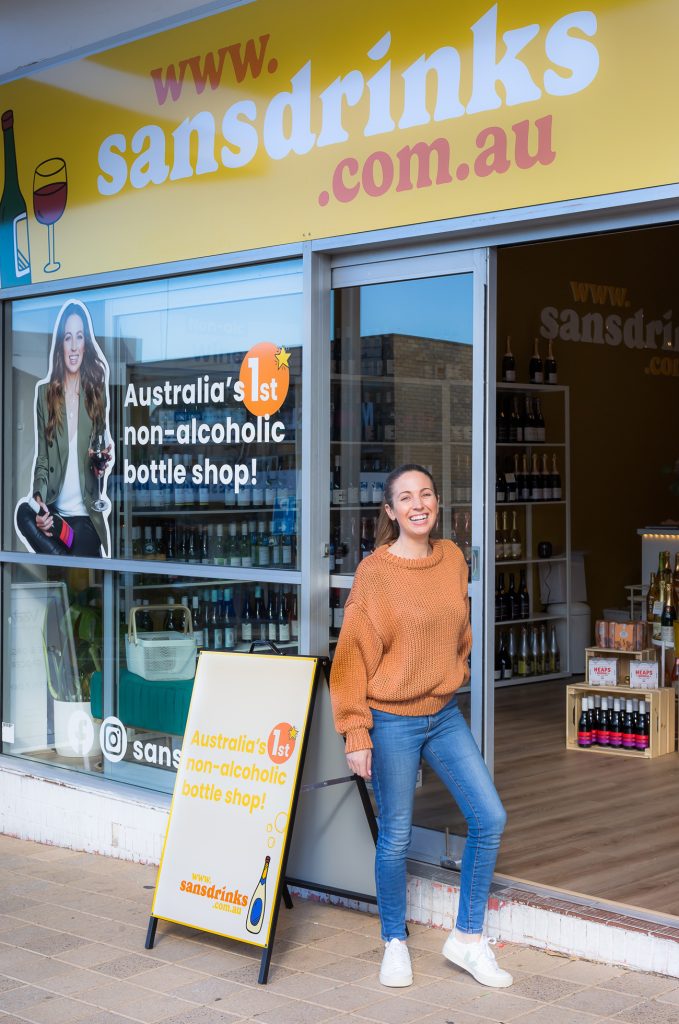
Overwhelming demand
Falcone opened Sans Drinks in Freshwater in May this year — directly opposite a Vintage Cellars store. In spite of the COVID-induced lockdowns experienced in Sydney since the store’s opening, Falcone says business has been “overwhelming” and “unexpected” thanks to the associated online store that has enabled her to keep trading and ships throughout Australia and New Zealand.
“I just wanted to have a small business. I didn’t set out to be a trailblazer twice in my life. I just wanted to do something that was kind of nice and cool. But, inevitably, I fell back into the trap of being the entrepreneur that I am — I’m either a go-hard or go-home kind of person. I mean, the online site, far out, I’ve gone through three warehouses already. I’m going to have to get another warehouse because I can’t keep up. It’s Nourished Life all over again but the growth has been much faster.”
Falcone expects to be stocking around 500 non-alcoholic beverage lines by year’s end with wines making up 80% of those. The wines retail for between $10 and $30 a bottle and around half of them are imported.
The majority of Sans Drinks customers are health-conscious women aged 25 and over, Falcone says — “people who enjoy a glass of wine in the evening but want it without alcohol”.
Observing a similar growth in no, as well as low, alcohol wine in Australia is Endeavour Group, which has responded by expanding the range of non-alcoholic beverages in BWS and Dan Murphy’s stores.
“Growth of no and low alcohol wine has been exceptional over the last couple of years, accelerating recently with the increased availability of high quality products designed to appeal to a broader customer base and the increasing demand for products that fit with customers’ changing lifestyles,” said Alison Sinclair, head of category insights for Endeavour Group.
“In the last year, sales of no and low alcohol wine have more than doubled and the number of customers purchasing these products has increased by 125%.
“Aligned with general health and wellbeing trends, low and no alcohol products are most commonly purchased by more affluent, premium customers and wine is no different,” Sinclair said. “Through the lens of generation, the customer of the current no and low wine offer is more likely to be a Baby Boomer or traditionalist. However, other drinks categories have demonstrated that interest in no and low alcohol products exists within younger generations when the offer meets their needs.
“Younger customers have a tendency to moderate to be a part of an occasion whereas older customers look to replace an existing alcoholic beverage with a no or low alcohol product for health reasons.”
Sinclair said Dan Murphy’s now boasts one of the country’s widest ranges of non-alcoholic beverages, comprising of more than 200 different products from craft beer, rosé and bubbles to craft gin and bourbon. In most Dan Murphy’s and BWS stores, these products are located within their corresponding categories. Recently, however, they have been positioned together in a single location in those stores where there is higher customer demand for them.
“We are also expanding our no and low alcohol range online, providing customers with greater access to products for delivery,” she said, adding that a curated range of non-alcoholic beverages had been launched nationally across Endeavour Group’s ALH Hotels in July, “because we want to be able to offer our patrons a drink for every occasion”.
“The non-alcoholic drinks menu will be part of our ongoing offering and includes a range of non-alcoholic beer, spirits and wine options,” Sinclair said. “In terms of demand so far on-premise, it’s still early days but it’s showing positive signs and growing rapidly.”
She said the majority of no and low alcohol wines stocked by Dan Murphy’s and BWS stores were largely home-grown.
“However, we do range a few Spanish wines. We know our customers enjoy supporting domestic brands so it is great when we can offer them no and low alcoholic wines from the wine regions and brands that they know and love.
“We expect that no and low alcohol wine will continue to grow into the future as more customers become aware of the offer and see the benefit of these products as part of their lifestyle. Customers of no and low alcoholic wines are existing wine customers who purchase these products for specific occasions. As such, it is critical that these products offer exceptional quality, replicating as closely as possible the flavour of the alcoholic version. The success of no and low alcohol beer and spirits has come from their ability to deliver liquids that are comparable with their alcoholic counterparts,” Sinclair said.
In New Zealand, where supermarkets are the most widely used channel for purchasing alcohol, the growing interest in no and low alcohol wine has been mirroring the trend across the Tasman.
Foodstuffs is one of the two main supermarket chains in the country, selling beer, wine and cider through its stores such as New World, PaknSave and Four Square. Chris Anderson, Foodstuffs North Island merchandise manager for liquor, said lighter alcohol options had entered the market from larger producers like Villa Maria, Stoneleigh and Selaks over the last five years or so. Although the chain currently only stocked a handful of 0% wines, this has increased significantly over the past 12 months, with the charge being led by local wine company Giesen with the launch of its 0% Sauvignon Blanc in 2020.
“Two things are happening simultaneously — production methods and skills in producing low and no alcohol beverages are improving, and customer demand is increasing,” Anderson noted. “Particularly since the pandemic, low and no alcohol has exploded. Anecdotally, we believe people were wanting to treat themselves to a wine or beer more often while at home, but opted for low and no options to manage their alcohol intake. And this has persisted — for example, in the first six months of 2021 Foodstuffs North Island sold as much 0% wine as they did in the whole of 2020.
‘Better-for-you’ options
“There is also a general trend for ‘better-for-you options’, particularly within the millennials age group,” he continued.
“Recognising the growing demand and range available, New World stores are creating ‘Zero Zones’ within the alcohol department, where consumers can easily find and explore the store’s full range of 0% alcohol products.”
He added that this year’s New World Wine Awards had welcomed its first ‘zero alcohol’ entries following the introduction of new classes specifically for wines containing less than 0.5% alcohol — likely a first for wine shows in New Zealand and perhaps globally, Anderson adds.
“We felt it was important to give these wines some additional attention so that we can help consumers find wine options that will best suit their needs. The classes attracted nearly 30 wines, in addition to lower alcohol wines entered in the usual classes.”
Adelaide-based Patritti Wines has been exporting de-alcoholised sparkling wine to Sweden since the mid-1990s and de-alcoholised red wine to India since the mid-2000s. The wine company has just released its first non-alcoholic wine onto the Australian market after seeing growth in no and low (NOLO) alcohol wine sales around the world.
“Our biggest selling products are actually non-alcoholic juices to Asia but de-alcoholised wines have been around 10% of our production for close to 20 years. These early markets have been quite stable however we are seeing growth in NOLO in almost all markets at the moment,” explains Patritti winemaker Ben Heide. “We specialise in these types of products because of our unique packaging line that allows for carbonation and in-bottle pasteurisation.
“We wanted to produce a new range that reflected where the growth is coming from and that’s health and well-being. People still want to enjoy good quality wines but they also are cutting back on alcohol. For many years NOLO was about driving, pregnancy, religion or forced health reasons. These days it’s much more about heath choices. The age demographic has also gotten younger; in the past we saw most interest from over 50s, now we are having lots of people in their 30s and even 20s coming into our cellar door looking for de-alcoholised wines.”
Named V.no, Patritti’s new non-alcoholic range of wines includes a Sparkling Blanc de Blancs, a white and a red. Heide says the wines are being produced using better quality base wines than the wine company’s previous no-alcohol offerings, with the de-alcoholisation carried out through low temperature vacuum evaporation — a process carried out by a third party.
Retailing for $12.95, the wines are sold in New South Wales, Victoria, Western Australia and Queensland through a distributor, with on-trade sales particularly successful to date. They are sold direct to the trade in South Australia and through Patritti’s cellar door and online shop, with some also sold through Sans Drinks.
Although early days for the brand, V.no sales are overall tracking well, Heide says.
“It’s actually been overwhelmingly positive in terms of the actual wines’ quality and also the brand itself and the packaging,” he says.
“One challenge with non-alcoholic wines or de-alcoholised wines is that they tend to need some sweetness to balance the acidity and tannins after the alcohol has gone. This means that the wines are often best served from the fridge. We are finding that education is the key. Educating consumers that the red table wine is going to have better balance chilled from the fridge and also that although there is some residual sugar, the wines are actually 65% lower in calories than their regular alcoholic equivalents.”
Heide says that although Patritti’s non-alcoholic juices are primarily enjoyed for “celebration purposes and are often for people who don’t drink at all — kids, religious, just non-drinkers”, V.no was more commonly consumed as an “every day wine replacement, on-premise, at a bar”.
“These people are often wine drinkers just having a non-alcoholic occasion, sometimes for health, sometimes driving or pregnant, but they are defiantly seeing these as a wine alternative.
“I think there is some consumer perception that non-alcoholic wines can’t be premium but I think that’s just an education thing. Non-alcoholic wine, in most cases, isn’t exactly the same as the product it’s replacing. Alcohol is a big part of wine. That’s probably why non-alcoholic beers have led the category, they taste like normal beer. We think that with better technology and the fact that the market is growing, we can put
better resources towards the wines; the quality is improving all the time, along with consumer understanding.
“The only way is up from here. We see this category continuing to grow and we are already working on V.no premium. Our aim is to produce wines that rival the quality of any alcoholic equivalent wine at a similar price point, and deliver a non-alcoholic occasion without having to compromise on flavour and character,” Heide said.
Falcone cautions the wine industry about regarding non-alcoholic wine as a category of wine per se.
“The biggest problem that the wine industry has is it’s treating non-alcoholic wine like a category of wine. They’re saying non-alc is a category like Shiraz is a category or Sauvignon Blanc is a category. Non-alcoholic wine is not a category of liquor at all. It is a health and wellbeing category. It is an extension of what you put in your body to feel fantastic.”
She singles out the Australian brand Plus & Minus as appreciating its fit within the health and well-being category for not only being non-alcoholic but containing antioxidants from added grape seed extract. The UK brand Wild Life Botanicals was another example — a 0.5% v/v English sparkling infused with vitamins, minerals and botanicals.
.
This post was originally featured in the November 2021 issue of the Grapegrower & Winemaker.
To read more articles like this, subscribe online here.
